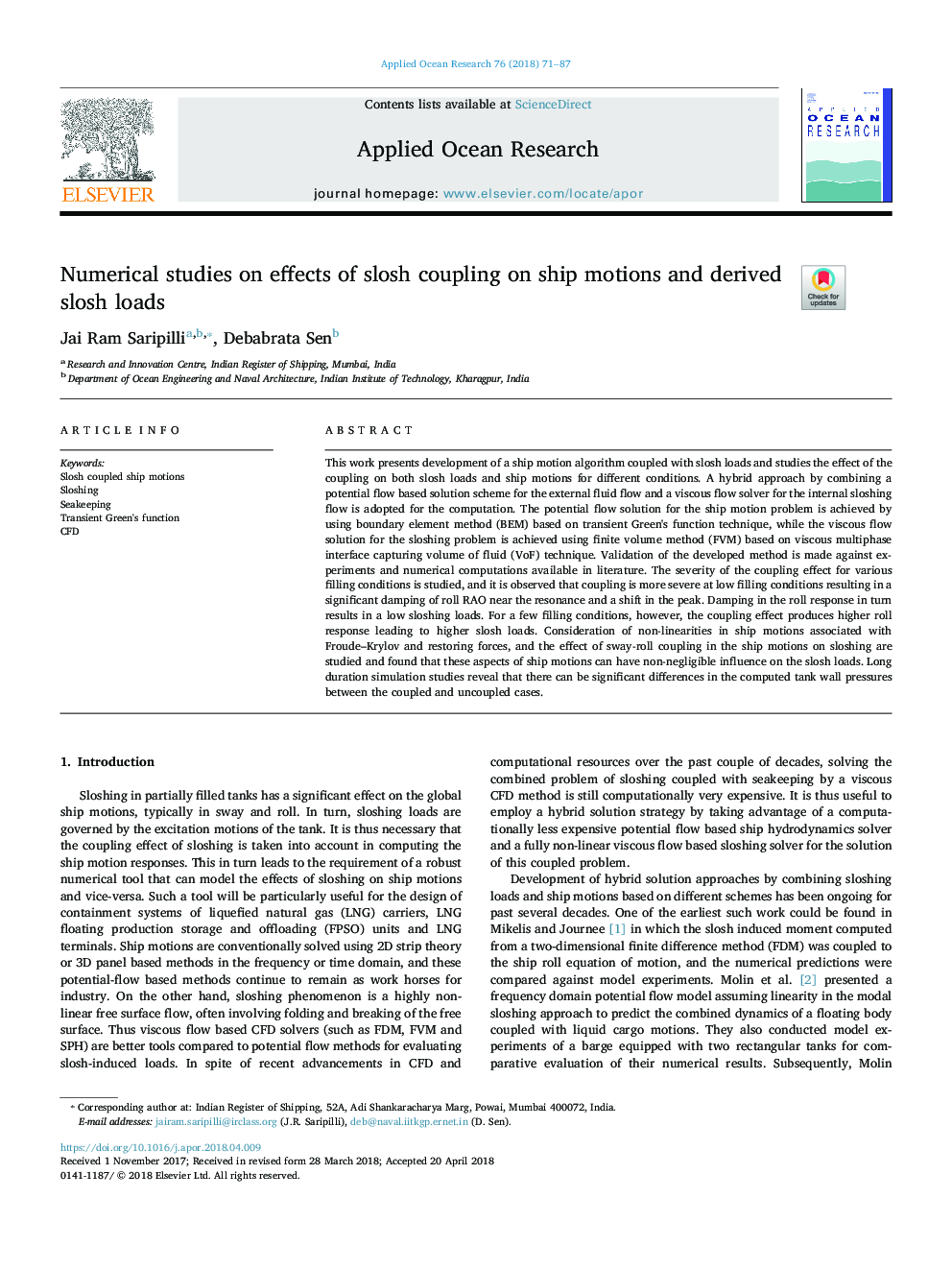| Article ID | Journal | Published Year | Pages | File Type |
|---|---|---|---|---|
| 8059242 | Applied Ocean Research | 2018 | 17 Pages |
Abstract
This work presents development of a ship motion algorithm coupled with slosh loads and studies the effect of the coupling on both slosh loads and ship motions for different conditions. A hybrid approach by combining a potential flow based solution scheme for the external fluid flow and a viscous flow solver for the internal sloshing flow is adopted for the computation. The potential flow solution for the ship motion problem is achieved by using boundary element method (BEM) based on transient Green's function technique, while the viscous flow solution for the sloshing problem is achieved using finite volume method (FVM) based on viscous multiphase interface capturing volume of fluid (VoF) technique. Validation of the developed method is made against experiments and numerical computations available in literature. The severity of the coupling effect for various filling conditions is studied, and it is observed that coupling is more severe at low filling conditions resulting in a significant damping of roll RAO near the resonance and a shift in the peak. Damping in the roll response in turn results in a low sloshing loads. For a few filling conditions, however, the coupling effect produces higher roll response leading to higher slosh loads. Consideration of non-linearities in ship motions associated with Froude-Krylov and restoring forces, and the effect of sway-roll coupling in the ship motions on sloshing are studied and found that these aspects of ship motions can have non-negligible influence on the slosh loads. Long duration simulation studies reveal that there can be significant differences in the computed tank wall pressures between the coupled and uncoupled cases.
Keywords
Related Topics
Physical Sciences and Engineering
Engineering
Ocean Engineering
Authors
Jai Ram Saripilli, Debabrata Sen,
